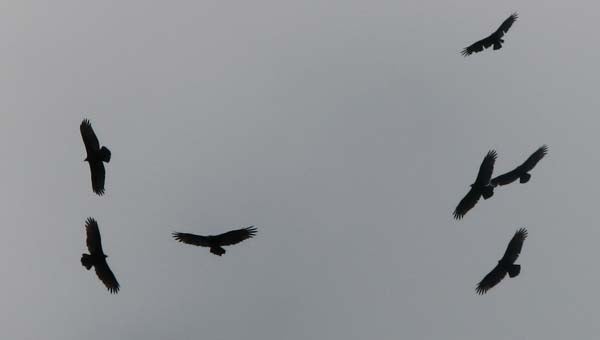Weather systems and migrating birds
Published 10:00 pm Monday, November 2, 2015
Bird migration can be simple, as in we all know that many species of birds fly north in the spring and move south in the fall, but it can also be complicated, especially when one starts to get into studying how and why birds migrate depending on the weather patterns.
But, as most of us most probably know, the bands of high and low-pressured air masses that move across North America from west to east are colloquially known as “highs” and “lows.” Did you know that, during bird migration, the southbound birds regularly use these moving weather patterns to aid them on their southerly mission?
Highs and lows are roughly circular in pattern and travel east at about 500 miles a day. Within a high-pressured system, the cool, dry air moves clockwise around a center of high barometric pressure; within a low-pressured system, the warmer, moister air moves counterclockwise. The boundaries between these highs and lows are called fronts. If a low is pushing a high, the front is called a warm front; if a high is pushing a low, the front is a cold front. In the fall of the year it is the cold fronts that birdwatchers need to watch, and in many parts of the world birders watch the evening television weather reports like hawks waiting for the perfect weather conditions that will produce outstanding bird movements.
Large flocks of passerine birds, which include everything from swallows to tanagers, waxwings, warblers and sparrows, follow the cold fronts on their way south.
Envisage this cold front approaching from the northwest. As it is the fall of the year, you know that colder weather is on the way. Ahead of this cold front bird migration is very slow. There will be a few hawks passing over during the daytime and swallows and other daylight migrants will drift through.
As the cold front passes over us, all bird migration stops, but the southbound movement picks up again as the front moves east of us. Now with the cold front heading further east, the southbound rush of birds is in full swing and all night long the nocturnal migrants are passing through, whilst, during the day, many other species are moving on. This migration rush continues as the high pressure approaches and then falls again as the warmer air hangs over us.
There are many theories as to why many migrants follow cold fronts, and these could include falling temperatures, rising barometric pressure or a change in the wind direction or speed. All most probably play some part in assisting the birds on their southbound journey.
So, as the cooler weather approaches this year, you will know that following the weather system the birds are on the move bound for warmer climes.
Simon Thompson has lived in WNC for the past 20 years. He owns and operates his own birding tour company, Ventures Birding Tours, on the web at birdventures.com. For more information on any of the birding activities in the area, check the website for additional listings.


